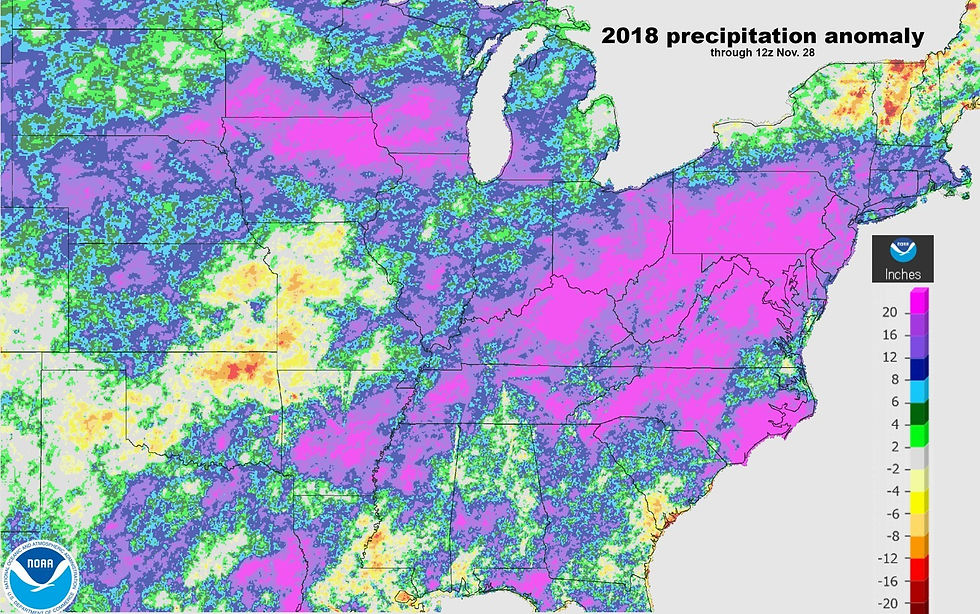The Benefits of Green Roofs: Part One
- Watershed Moments
- May 4, 2017
- 3 min read
Green Roofs Improve Human Health: Blog #1 Storm Water Management
In highly urbanized areas, green or living roofs have many benefits to the urban ecosystem, including homo sapiens. In the U. S. they have become more popular over the last 20 years and have been popular in Europe for decades. The major benefits of green roofs are storm water management, reduction of urban heat island effect, habitat creation, extension of roof membrane and building energy reduction. Storm water management will be addressed below and other benefits will be explained further in future blogs in this series.
Green roofs are typically comprised of a root barrier, (to protect the membrane), drain media/layer, filter fabric, growth media, (soil) and plants. Intensive are 4-6” deep and extensive are 6”+ deep, which increases the plant palate. One can argue which benefit is greater and with so many, they should not be discounted as a viable practice to improve air
EQR has maintained streams, storm water management ponds, bioretention facilities, rain gardens and wetlands for 26 years, and understands the importance of maintenance and now has experienced staff for the care and maintenance for living roofs. Storm water management best management practices on roofs of buildings.

Benefit #1: Storm Water Management
Water quality, (quantity too) are essential to human health. Many cities in the United States have combined sewer overflow systems, which means, during rain events raw sewage from septic systems is combined with storm water prior to being treated at a treatment plant. When as little as ¼” of rain falls, many systems cannot handle both sewage and rain fall, so the sewage flows into our water ways. Bacteria, toxins, nutrients, floatables, pathogenic microorganisms, e-Coli and other pollutants are introduced to our waters. These pose threats to human health, aquatic habitat and aquatic species.
By placing a living or green roof on a building’s roof, an estimated 60-70% of storm water which falls onto the rooftop remains there or slowly drains off the roof in a matter of hours or days. During the first flush, when green roof detain up to 85% of storm water, occurs during the first few hours of a rain event in which large volumes of water head to the treatment plant. The system is designed, along with the drainage layers or water retention layers absorb water and delay runoff. Evapotranspiration occurs naturally when water is transferred from the soil and plants into the atmosphere. The plants and soil have the ability to uptake contaminants and bacteria from storm water. For storm water management purposes, sedum plants are the most common plant variety. The depth of media can be minimal, which influences cost and sedums have ability to withstand longer periods of drought, which occur in the mid-Atlantic. Crassulacean acid metabolism, also known as CAM photosynthesis are more common in plants which grow in arid conditions, such as rooftops. They shut down evapotranspiration during the day and open at night to collect carbon dioxide.
In urbanized areas with limited parklands and trees, green roofs provide an effective urban planning tools for storm water management practice.
Contact EQR
As environmental construction experts for over 26 years, Environmental Quality Resources is proud of our mission of working outdoors to preserve and protect our watershed in a positive way. Visit us online or give us a call at (410) -923-8680 to get more information and see if we are what you’re looking for. Looking to see what we are currently working on and more about our company? Follow us on Facebook, Instagram, LinkedIn, Twitter, and YouTube!










Comments